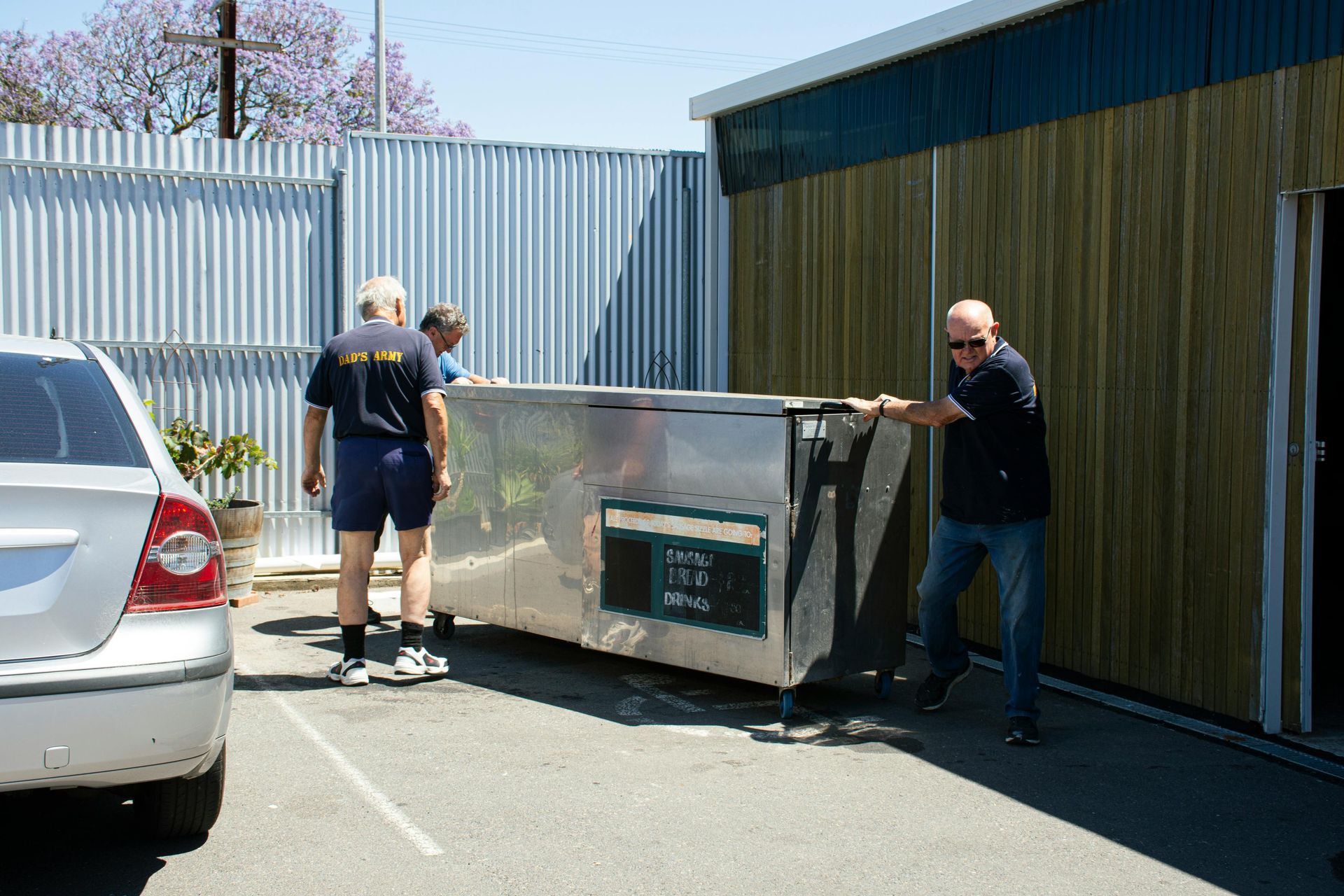Best Practices for Downsizing Before Your Michigan Move
Moving to a new home in Michigan presents the perfect opportunity to evaluate your belongings and create a fresh start. Downsizing before moving isn't just about reducing the volume of items you transport; it's about making intentional decisions that will benefit your new lifestyle. Whether you're relocating within Michigan or moving to the Great Lakes State from elsewhere, implementing effective downsizing practices can significantly reduce moving costs, minimize stress, and help you settle into your new space more efficiently.
The process of downsizing and moving requires careful planning and systematic execution. Many homeowners underestimate the time and emotional energy required to sort through years of accumulated possessions. However, with the right approach and downsizing tips for moving, you can transform this potentially overwhelming task into an organized, manageable process that prepares you for a successful transition to your new Michigan home.
Key Takeaways
- Start the downsizing process at least 8-12 weeks before your move date to allow adequate time for decision-making and item disposal
- Use the four-box method (keep, donate, sell, trash) to systematically sort through each room and maintain organization throughout the process
- Focus on high-impact areas first, including storage spaces, closets, and basements, which typically contain the most items requiring decisions
- Consider the layout and size of your new Michigan home when making decisions about furniture and large items to ensure everything fits appropriately
- Document valuable items through photos and appraisals before selling or donating to maintain accurate records for tax purposes
- Plan for Michigan's climate by prioritizing appropriate seasonal clothing and equipment while reducing items unsuitable for the region
Creating Your Downsizing Timeline
Successful downsizing before a move requires strategic planning and adequate time allocation. The timeline you establish will determine how thorough and stress-free your downsizing experience becomes. Starting your downsizing process 8-12 weeks before your move date provides sufficient time to make thoughtful decisions without feeling rushed or overwhelmed.
Begin by conducting a comprehensive walkthrough of your current home to assess the scope of your downsizing project. Take inventory of each room, noting areas with the highest concentration of items. Create a master list that includes storage areas, closets, garages, basements, and attics. This initial assessment helps you understand the magnitude of the task and allows you to allocate appropriate time for each area.
During the early planning phase, research your new Michigan community to understand local donation centers, consignment shops, and recycling facilities. Many Michigan communities have specific guidelines for item disposal and donation, so familiarizing yourself with these requirements early will streamline the process later. The active downsizing phase involves the actual sorting and decision-making process. Work through one room at a time, dedicating focused attention to each space. This systematic approach prevents the overwhelming feeling that can occur when trying to tackle multiple areas simultaneously.
The Four-Box Sorting Method
The four-box method provides a systematic approach to decision-making that eliminates confusion and maintains organization throughout your downsizing process. This proven technique involves designating four containers or areas for different categories: keep, donate, sell, and trash. By forcing every item into one of these categories, you avoid the common pitfall of creating indefinite "maybe" piles that complicate the process.
Keep Category Guidelines
Items designated for the keep category should meet specific criteria that justify the cost and effort of moving them to your new Michigan home. Essential items include those you use regularly, items with significant sentimental value that cannot be replaced, and pieces that fit your new home's layout and style. Apply practical questions: Have I used this in the past year? Will this fit in my new home? Does this item serve a specific purpose that isn't fulfilled by something else I'm keeping?
Consider the cost of moving versus replacing when evaluating borderline items. Heavy, low-value items like basic bookcases or simple storage containers might be less expensive to replace than to move, especially for long-distance moves to Michigan. Conversely, high-quality, expensive items that fit your new space should generally be kept, even if they require special handling during the move.
Donation and Sale Strategy
The donate category serves items in good condition that no longer fit your needs but could benefit others. Research local Michigan charities and donation centers to understand their acceptance criteria and pickup services. Many organizations have specific needs or restrictions, so contacting them early in your downsizing process helps you plan effectively. Document donated items for tax purposes by taking photos and obtaining receipts from qualified charitable organizations.
Items with significant resale value justify the time and effort required for selling. Focus on electronics, jewelry, quality furniture, collectibles, and specialty equipment that retain value. Research current market prices for your items using online marketplaces and local sold listings to set realistic expectations. Consider various selling platforms based on your items and timeline. Online marketplaces work well for local sales of larger items, while consignment shops can handle multiple items simultaneously but take a percentage of sales.
Room-by-Room Downsizing Strategy
Implementing a systematic room-by-room approach ensures thorough coverage and prevents important areas from being overlooked. Each space in your home presents unique challenges and opportunities for downsizing. By addressing rooms strategically, you can maintain organization and track your progress effectively.
Storage areas typically contain the highest volume of items requiring decisions, making them ideal starting points for your downsizing process. Begin with attics, basements, and storage closets where items often accumulate over the years without regular evaluation. These spaces frequently house seasonal decorations, old electronics, outgrown clothing, and forgotten purchases that can be easily eliminated.
When decluttering closets, apply the one-year rule: if you haven't worn or used an item in the past year, consider whether it serves a purpose in your new home. Pay special attention to clothing appropriate for Michigan's climate. If you're moving from a warmer region, you may need to invest in cold-weather clothing while reducing summer-specific items. Living areas require careful consideration of furniture placement and functionality in your new Michigan home. Measure your new living spaces and create floor plans to determine which furniture pieces will fit appropriately.
Kitchens accumulate gadgets, duplicate tools, and expired items that can significantly reduce moving volume when addressed systematically. Evaluate each appliance and tool based on frequency of use and availability of alternatives. Small appliances that serve single purposes and are used infrequently often make good candidates for elimination. Check expiration dates on pantry items and spices, disposing of anything that won't remain fresh through the moving process. Dining areas typically contain china, glassware, and serving pieces that may not fit your new lifestyle or dining space.
Managing Sentimental Items During Downsizing
Sentimental items present unique challenges during the downsizing process because their value extends beyond practical utility or monetary worth. These items connect us to memories, relationships, and personal history, making decisions about them emotionally complex. However, keeping every sentimental item isn't practical when downsizing for a move, requiring a balanced approach that honors important memories while being realistic about space limitations.
Create tiers of sentimental value to help guide your decisions. The highest tier includes irreplaceable items like family heirlooms, handwritten letters from deceased relatives, wedding photos, and items directly connected to major life events. These items typically justify the space and moving costs due to their irreplaceable nature and deep personal significance. Middle-tier items might include gifts from friends, travel souvenirs, or items associated with hobbies you no longer pursue actively.
Digital preservation is a practical solution for maintaining memories while reducing physical items. Photograph collections of items, create digital scrapbooks, or scan important documents and letters. This approach preserves the memories associated with items while eliminating the storage and moving requirements. For children's artwork or school projects, create photo books that capture the essence while requiring minimal space. Family heirlooms and inherited items often carry significance for multiple family members. Consider distributing these items among siblings, children, or extended family who would appreciate and care for them.
Disposal and Donation Options in Michigan
Michigan offers numerous resources for responsibly disposing of and donating items during your downsizing process. Understanding these options helps you plan efficiently and ensures items find appropriate new homes or proper disposal. Many Michigan communities have specific programs and requirements that can affect your disposal strategy, making research an important part of your downsizing plan.
Michigan hosts numerous charitable organizations that accept household goods, furniture, and clothing donations. Major national organizations like Goodwill and The Salvation Army operate throughout the state, offering convenient drop-off locations and pickup services for large items. Local food banks often accept kitchenware and small appliances, while women's shelters may need household items and professional clothing. Specialized organizations focus on specific types of items. Habitat for Humanity ReStores accept building materials, appliances, and home improvement items.
Michigan has comprehensive recycling and hazardous waste disposal programs that handle items unsuitable for regular trash collection. Electronics recycling programs operate throughout the state, accepting computers, televisions, phones, and other electronic devices. Many municipalities host seasonal hazardous waste collection days for paints, chemicals, batteries, and other potentially dangerous materials. Recycling centers accept various materials, including metals, plastics, paper, and glass, with some centers paying for certain materials like aluminum cans and scrap metal.
Cost-Saving Benefits of Downsizing
Downsizing before moving generates significant cost savings that extend beyond the immediate moving expenses. Professional moving companies typically charge based on weight and volume, so reducing your belongings directly decreases transportation costs. These savings become more substantial for long-distance moves to or within Michigan, where distance-based pricing can make every pound expensive.
Professional moving services charge based on several factors that downsizing directly impacts. Weight-based pricing means fewer belongings translate to lower transportation costs. Volume-based pricing considers truck space requirements, making downsizing especially valuable when it allows you to use a smaller truck or reduces the number of trips required. Packing supply costs decrease when you have fewer items to pack, as boxes, tape, bubble wrap, and other materials represent significant expenses for large moves.
Selling items during downsizing generates revenue that can offset moving expenses or contribute to your new home setup. High-value items like quality furniture, electronics, and specialty equipment often retain significant resale value. Even modest items can accumulate meaningful amounts when sold collectively through garage sales or online marketplaces. Tax benefits from charitable donations provide additional financial advantages, as qualified charitable donations can be deducted from taxable income. Downsizing often enables you to choose a smaller, less expensive home in Michigan, reducing mortgage payments, property taxes, insurance costs, and utility expenses.
Frequently Asked Questions
How early should I start downsizing before moving to Michigan?
Begin your downsizing process 8-12 weeks before your planned move date to allow adequate time for thoughtful decision-making. This timeline provides sufficient opportunity to sort through belongings, arrange for item disposal or donation, and complete any selling activities without feeling rushed.
What items should I prioritize when downsizing for a Michigan move?
Focus first on storage areas, closets, and basements where items accumulate over time and decisions are often easier to make. Consider Michigan's climate when evaluating seasonal items, prioritizing appropriate weather gear while reducing items unsuitable for the region.
How do I decide what furniture to keep when downsizing?
Measure your new Michigan home's rooms and create floor plans to determine which furniture pieces will fit appropriately. Keep versatile, high-quality pieces that can adapt to different room configurations while eliminating duplicates or items that won't fit your new space.
What's the best way to handle sentimental items during downsizing?
Create tiers of sentimental value, keeping only the most irreplaceable items while using digital preservation methods for others. Consider sharing family heirlooms with relatives or repurposing items into functional pieces for your new home.
Where can I donate items when downsizing before moving to Michigan?
Michigan has numerous donation options including Goodwill, The Salvation Army, Habitat for Humanity ReStores, and local charities that accept household goods. Research specific organizations in your area for pickup services and item requirements to streamline the donation process.
Final Thoughts
Implementing effective downsizing practices before your Michigan move transforms a potentially overwhelming process into an organized, manageable project that benefits your entire relocation experience. The systematic approach of starting early, using proven methods like the four-box sorting system, and addressing each area of your home methodically ensures thorough results while maintaining your sanity throughout the process. The time and effort invested in downsizing before moving pays dividends through reduced moving costs, decreased stress, and a smoother transition to your new Michigan home.
Remember that downsizing is ultimately about creating space for new experiences and opportunities in your new Michigan community. Every item you choose to keep should serve a purpose or bring joy to your new lifestyle. By following these comprehensive downsizing tips for moving, you'll arrive at your new home with only the belongings that truly matter, setting the foundation for a fresh start in the Great Lakes State. The decluttering process, while challenging, becomes a valuable opportunity to reflect on your priorities and intentionally design your new living space.
Ready to downsize for your Michigan move? Contact our team for expert moving assistance today.
Reference:
https://www.salvationarmy.org/











